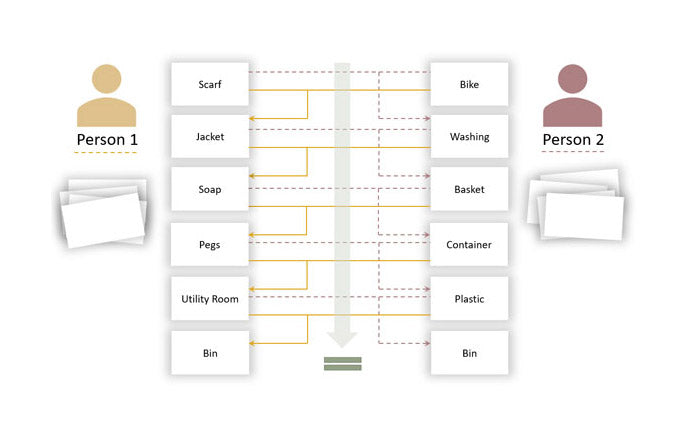Purpose
Imagine a person who talks about himself all the time. The conversation is full of “I”, “me”, “my” and they constantly talk about what happens in their lives. Such people don’t tend to last long as friends. Usually, the people we most like are those who are caring and selfless rather than those who are self-centred. To such people nothing seems to be as important or interesting as themselves.
Unfortunately, we all might suffer from a degree of self-centred view from time to time and would need to keep an eye on it. This exercise helps delegates see what it means to shift focus to others even when you want to talk about your own views. It is a clever and subtle way to shift attention to others without overtly forcing them to change.
This exercise also helps delegates see how important it is to let events speak for themselves. It focuses the mind to cover facts more than subjective emotions and let a listener decide for himself on what to interpret. The exercise is ideal for creative writing as it provides a structured approach to storytelling.
Objective
Tell a story in first-person while using first-person pronouns (such as “I”) only once.
What You Need
- Papers
Setup
- Divide the delegates to pairs. If you have an odd number of delegates use a group of 3.
- Explain that in this exercise each person in each pair should tell a story to their partner.
- The story must be told in the following format:
- It must be in first-person narration.
- They can only mention a first-person pronoun (such as “I”, “me”, “my”) once for the duration of the story.
- They should therefore imply first person, but keep the focus on the characters and the environment of the story.
- Read through the following example to illustrate what you are looking for:
- “The city was buzzing with life. Wandering crowds rushing around, each focusing on what they were about to do next. Suddenly there was a familiar face. It was Emily. She was jogging. It must have been 6pm as this is usually the time she goes to the central part for her daily exercise. She didn’t see me. She was running fast. It was important to keep up with her or she would disappear. It was getting dark at this time of the year. A few drops of rain started to come down from the sky. Thankfully, she did have a rainproof jacket…”
- Allocate 5 minutes for everyone to think about their stories and decide what they want to talk about. They can take notes as necessary while they prepare.
- Their stories can be about anything, whether experienced or imagined, though preferably about some concert experience. They must include some characters in their stories so they don’t end up talking about the poetic beauty of a sunset as this would not really serve the purpose of the exercise.
- Ask groups to choose who would be first to start.
- The first person should then tell his story to his partner. Partners should listen carefully and follow the story while also spotting any use of “I” and similar pronouns. If the storyteller states a first-person pronoun more than once, their partner should flag this and the storyteller should rephrase with the first-person pronoun and move on with the story.
- The stories should be about 5 minute long.
- After the allocated time, ask groups to swap roles and then repeat the exercise.
- Allocate another 5 minutes for this part.
- Bring back everyone together and ask them to share their experience in telling a story in this way.
- Follow with a discussion.
Timing
Explaining the Exercise: 5 minutes
Activity: 5 min thinking about the story + (2 * 5 min telling story) = 15 minutes
Group Feedback: 10 minutes
Discussion
Did you make any mistakes? How easy was it to talk about a story from your own point of view but without focusing on yourself? How did you appear to your partner? Did they find you more interesting since you were focusing more on the event and characters in the story rather than your own subjective view? What is the most important lesson that you have learned in this exercise?
Soft Skills Training Materials
Get downloadable training materials
Online Train the Trainer Course:
Core Skills
Learn How to Become the Best Trainer in Your Field
All Tags
Training Resources for You

Course Design Strategy
Available as paperback and ebook

Free Training Resources
Download a free comprehensive training package including training guidelines, soft skills training activities, assessment forms and useful training resources that you can use to enhance your courses.

Our Comprehensive Guide to Body Language

Train the Trainer Resources
Get Insights - Read Guides and Books - Attend Courses
Training Materials
Get downloadable training materials on: Management Training, Personal Development, Interpersonal Development, Human Resources, and Sales & Marketing














Leave a comment
All comments are moderated before being published.
This site is protected by hCaptcha and the hCaptcha Privacy Policy and Terms of Service apply.